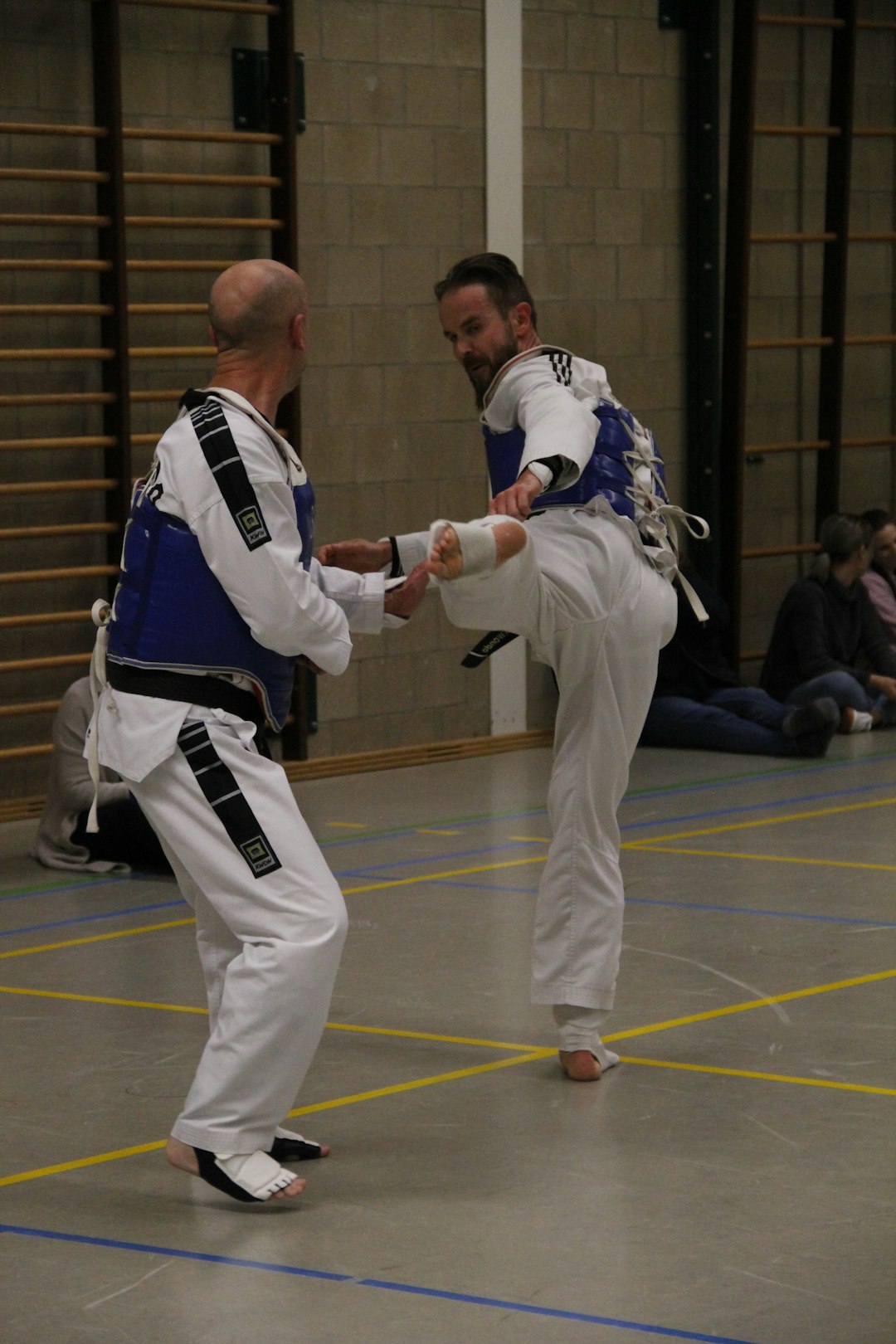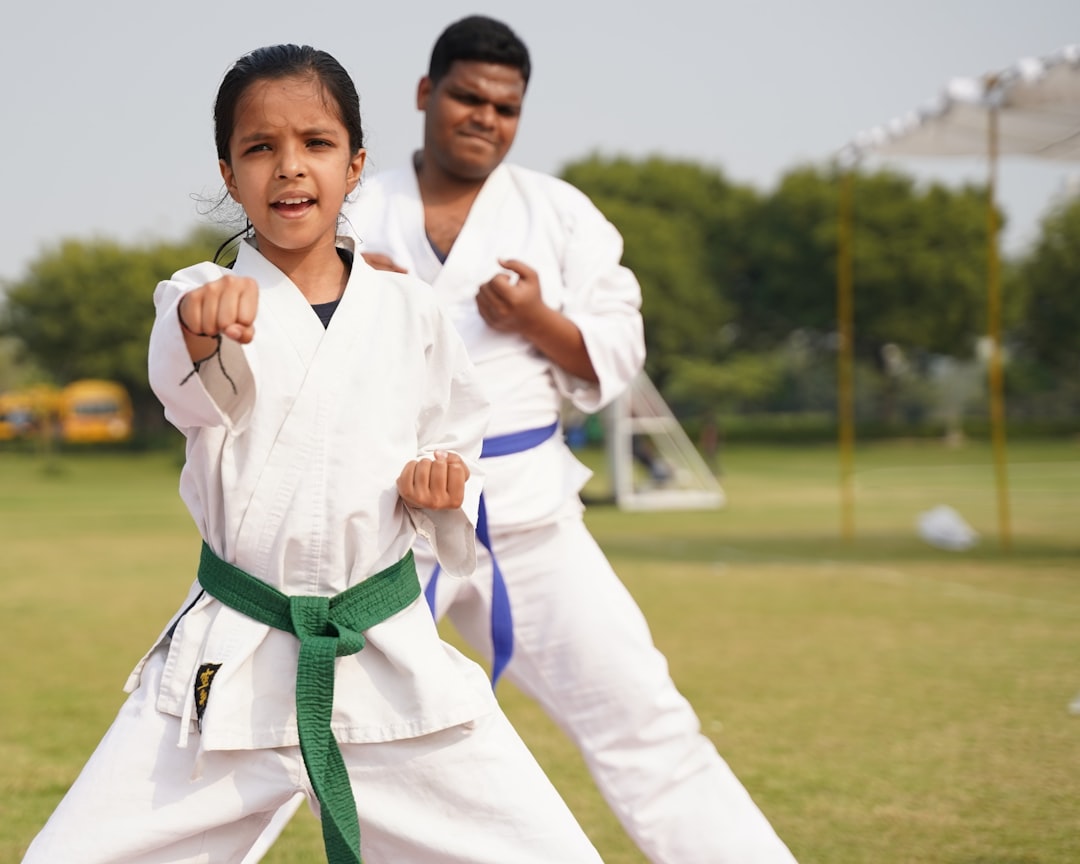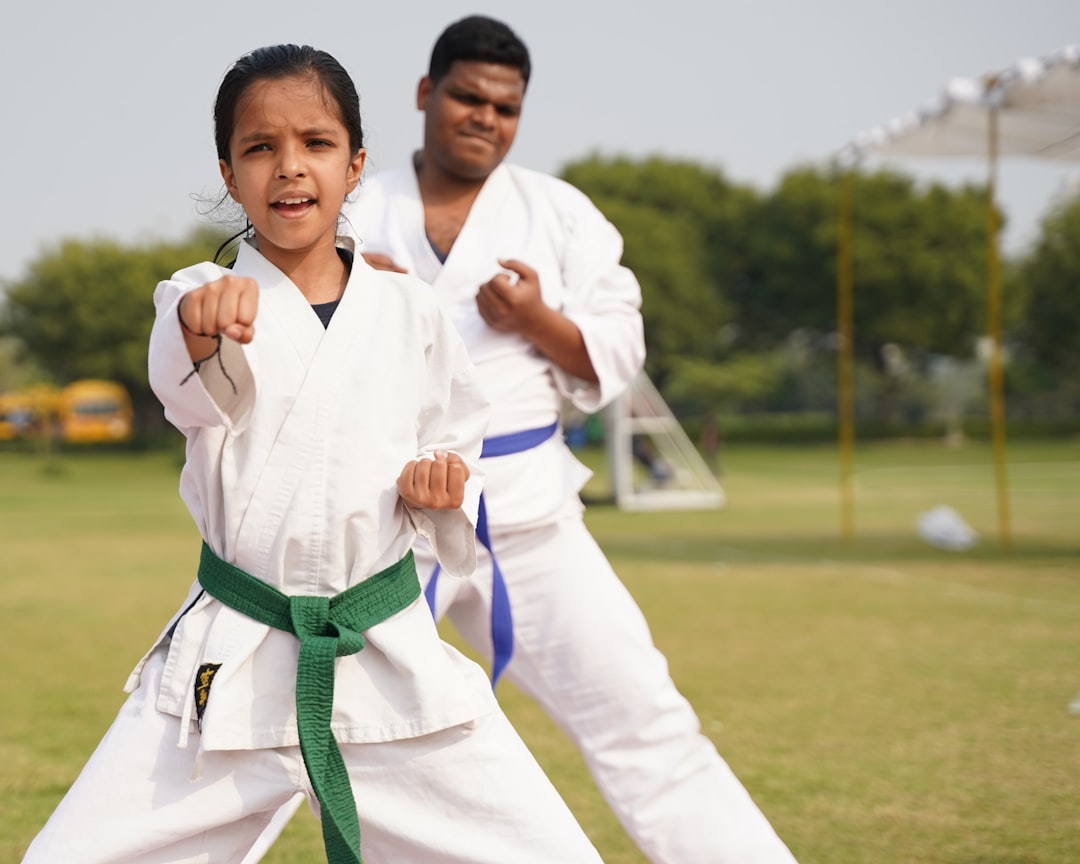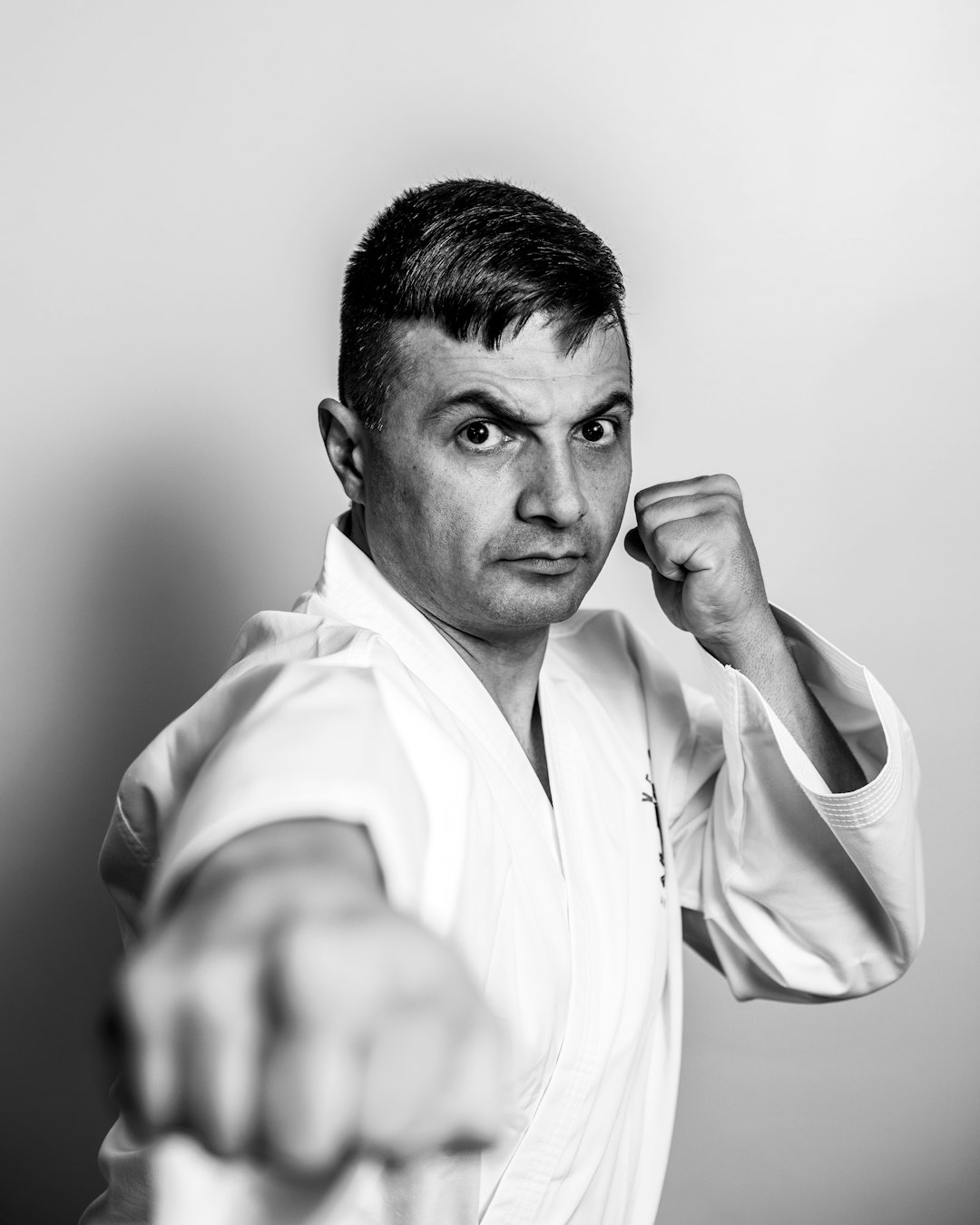The Karate Gi is a fundamental part of karate culture and training, serving as more than just attire—it's a symbol of respect for tradition and a tool that facilitates movement for effective technique execution. Historically rooted in Okinawan martial arts and influenced by judo and Korean Do Gi, the Gi has evolved to suit karate's unique needs, with its belt colors reflecting the practitioner's rank and skill level, fostering unity within the karate community. The Gi's components—the jacket, trousers, and obi—are designed for both functionality and honor, with women requiring a balance between snugness and flexibility, while men opt for a slightly roomier fit to ensure unrestricted movement. The choice of fabric is crucial for comfort and performance during intensive training. The color white signifies humility for beginners, while black represents mastery for advanced practitioners. Regular care and maintenance are essential to keep the Gi in good condition, with special attention to washing, drying, and storing it properly to preserve its quality and integrity over time. For those committed to karate, a well-maintained Gi is not just an item of clothing but a symbol of their dedication to the art and an integral part of authentic karate practice.
Exploring the traditional attire in martial arts, this article sheds light on the significance of a Karate uniform, commonly known as a Gi. We delve into its origins, construction, and the symbolism woven within its fabric. From selecting the perfect fit for different genders and body types to maintaining it with reverence, discover how a Karate Gi transcends mere clothing to embody discipline and respect in the practice of this ancient art. Whether you’re an enthusiast or a practitioner, understanding the essence of a Karate Gi is brought to the forefront, ensuring your martial journey is adorned with the proper attire.
- Understanding the Essentials: The Significance of Karate Gi and Its Origins
- The Anatomy of a Traditional Karate Uniform: Gi Breakdown
- Choosing Your Karate Gi: Factors to Consider for Different Gender and Body Types
- The Role of Color and Symbolism in Karate Gis
- Maintaining and Caring for Your Karate Gi: Ensuring Durability and Respect
Understanding the Essentials: The Significance of Karate Gi and Its Origins

When one thinks of karate, a mental image often includes an individual dressed in a traditional garment known as a “Karate Gi.” This garment is not merely a uniform but a symbol steeped in tradition and essential for practitioners. The Karate Gi serves multiple purposes beyond its aesthetic value; it allows participants to move freely during practice, providing flexibility and ease of motion necessary for the fluid execution of techniques. Moreover, the Gi facilitates an understanding among practitioners, as the standardized attire ensures that rank and skill level are visually recognizable through belt colors.
The origins of the Karate Gi can be traced back to the martial arts schools in Okinawa, where it was initially used by students of martial arts. The design was influenced by Japanese judo uniforms, which were themselves inspired by the traditional Korean martial artists’ attire known as “Do Gi.” Over time, the Karate Gi has evolved and been adapted to meet the specific needs of karate practice, distinguishing it from other martial arts uniforms. Today, a proper Karate Gi is essential for any practitioner looking to bring authenticity and respect to their discipline. It brings together functionality with tradition, allowing karateka to honor the past while preparing for the future in the dojo.
The Anatomy of a Traditional Karate Uniform: Gi Breakdown

When practicing the disciplined art of karate, donning the appropriate attire is essential to both the respect of tradition and functionality during training. A traditional karate uniform, commonly known as a gi, serves as a blank canvas that allows practitioners to focus on their form and technique without distraction. The gi is composed of several key components that each play a role in its utility and symbolism within the martial arts community.
The top half of the gi, often referred to as the “jacket” or “uwagi,” is typically made of heavier cotton material, designed to provide durability during practice and competition. It features a belt, or “obi,” which not only holds the garment in place but also signifies the wearer’s rank within the karate dojo. The pants, known as “hakama” in some martial arts, are part of the traditional outfit in others like kendo or iaido, but for karate, practitioners typically wear simple trousers called “rei gi,” which are straight-legged and designed to move freely with the body. The jacket and pants are usually matched in color, often white being the most prevalent choice, symbolizing purity and humility. Additionally, a belt, or “belt,” worn around the waist serves as both a functional fastener and a visual representation of the practitioner’s skill level, with different colors indicating varying levels of proficiency. Is it necessary to wear the traditional gi for practicing karate? Absolutely, as it not only adheres to the martial art’s rich history but also offers practical benefits during training, making it an integral part of the karate experience.
Choosing Your Karate Gi: Factors to Consider for Different Gender and Body Types

When selecting a karate gi, also known as a judogi or keikogi, it’s crucial to consider both comfort and functionality for different genders and body types. For women, choosing a gi with a snug yet flexible fit is essential. Is the jacket long enough to cover the hips and thighs without being too loose or restrictive? A well-fitted gi for women should allow for a full range of motion while adhering to the specifications set by various karate organizations. Meanwhile, men may opt for a slightly larger fit in the jacket while ensuring the trousers are neither too tight nor baggy. Do the pants provide enough room for mobility without being overly loose? The right gi should not only meet the standards of your dojo or competition but also accommodate your body type, whether you’re slender, athletic, or have a larger build. It’s important to note that the weight and weave of the fabric can also impact comfort and performance; lighter fabrics offer more freedom of movement, while heavier ones provide additional warmth and durability. What type of fabric feels best against your skin and supports your body as you execute techniques? Opting for a gi with a breathable material is beneficial during intensive training sessions, ensuring you stay cool and dry. Additionally, consider the color and design that align with your personal preferences and the requirements of your karate discipline. Does the gi reflect your ranking or affiliation with a particular style or school? By carefully evaluating these factors, you can find a karate gi that brings out your best on the mat while respecting the traditional roots of martial arts.
The Role of Color and Symbolism in Karate Gis

When practicing the ancient art of karate, practitioners don a traditional garment known as a gi. The color and symbolism of a karate gi are not mere aesthetic choices but serve to reflect the wearer’s rank and status within the discipline. Typically, karate gis come in white or black, with each color representing different aspects of the martial art. White gis, for instance, often signify purity, humility, and the readiness to learn and improve. On the other hand, black gis can denote maturity, mastery, and a deep understanding of the principles karate encompasses. Additionally, various colored belts are worn over the gi, further indicating the wearer’s level of skill and expertise. The use of color in karate gis also serves to create a sense of unity and respect among practitioners, as everyone, regardless of rank, dons the same style of garment during training and competitions.
Is it necessary for beginners to bring their own karate gi to their first class? While some dojos may provide a loaner gi for new students, it is generally recommended that practitioners invest in their own as they progress. Owning a personal gi ensures comfort and proper fit, both of which are crucial for the execution of movements and techniques. It also signifies the individual’s commitment to the practice of karate, marking the beginning of their martial arts journey with the appropriate attire. Whether you’re attending a class or participating in a tournament, having your own gi is an essential part of respecting the tradition and discipline of karate.
Maintaining and Caring for Your Karate Gi: Ensuring Durability and Respect

When it comes to maintaining and caring for your karate gi, also known as a ‘keikogi’, it’s crucial to understand the best practices to ensure its durability and respect the tradition of this martial art attire. To begin with, regular upkeep is key to maintaining the integrity of your gi. Are you aware of how to properly wash and store your karate uniform to prevent damage and extend its lifespan? After each training session, it’s important to shake out your gi to remove any dirt or debris and air it out if possible. For a deep clean, use a mild detergent and cold water to wash your gi by itself to avoid color transfer or damage from other materials. Avoid using fabric softeners or bleach, as these can weaken the fabric and reduce the gi’s ability to withstand the rigors of karate practice.
Drying your gi correctly is equally important. Should you hang it to dry or lay it flat? Hang your gi on a clothesline away from direct sunlight, which can cause fading and weaken the fibers over time. If line drying isn’t an option, lay it flat in a well-ventilated area, ensuring it’s not bunched up or creased in a way that could create permanent wrinkles or pressure marks. Regularly inspect your gi for any tears or wear and address these promptly with repairs to maintain its structural integrity. By following these care instructions, you’ll honor the tradition of karate while keeping your gi in top condition for many practices to come.
In wrapping up our exploration of the traditional garb in karate, it’s clear that the Karate Gi serves as more than just a uniform; it embodies the rich history and cultural significance of the martial art. From understanding its origins to recognizing the symbolism each color carries, selecting the appropriate Gi for one’s training is not merely a matter of practicality but also of respect for the discipline. As practitioners advance in their karate journey, maintaining their Gi ensures its longevity and honor. For those seeking to bring Karate into their lives, investing in the right Gi is an essential step that aligns with the martial art’s traditions while supporting one’s practice.
